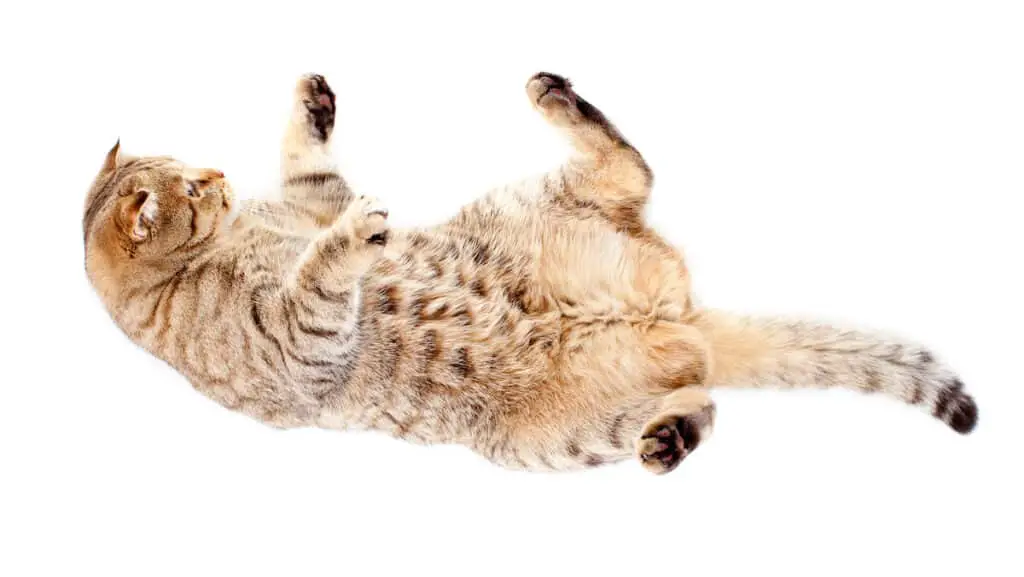The saying “cats always land on their feet” is something that has confused people for a long time. Is it true or just something that people say? If you want to know if it is true and how they do it, keep reading.
Do cats always land on their feet?
Scientists have been puzzled for a long time by cats’ ability to always land on their feet. This is because they have a built-in balancing system called the “righting reflex.” Even though cats usually land upright, there are some things that can affect their ability to do so – like how high they are falling from. For a long time, people thought that when cats were dropped from someone’s hand, they managed to ‘push off.’
In 1894, French scientist Etienne-Jules Marey found out that cats do not always land on their feet. He took 60 pictures of a cat falling per second. Then he watched it in slow-motion to see how they landed on their feet.
Why do cats always land on their feet?
The way cats always land on their feet is called the righting reflex.
They have a built-in sense of balance from the vestibular apparatus in their ear that allows them to quickly orient themselves and rotate their head and body in mid-air so they can land safely on all fours.
Cats have special bones that help them grow and develop throughout their lives. For example, kittens as young as 3 weeks old can already correct themselves if they fall over. By 7 weeks old, they can do this reflex quickly and easily. Additionally, their low body-to-weight ratio also helps them land on their feet when they fall, by slowing down their velocity.
Believe it or not, cats use their tails and whiskers to help orient and move themselves in space. Their tails in particular are like rudders that move the rest of the body, either in the air or on the ground.
How does the height of the fall affect the landing?
How often cats land on all fours after falling depends mostly on how high they fell from. In 1987, a study was done by looking at records of cats that had fallen from tall buildings. They found that even though most of the cats landed on concrete, almost all of them survived the fall (90%). And only 37% of them needed help from a doctor or emergency medical attention.
But the height of the fall was the most important factor in determining how injured the cat became. Cats who fell from between 7 and 32 stories had less injuries, while those who fell shorter distances of 2 to 6 stories had more injuries. Amazingly, a cat that fell a record-breaking 32 stories and landed on concrete was released after only 48 hours with only minor tooth damage and a punctured lung.
Scientists believe that cats can right themselves better if they fall from a higher place. It is thought that cats falls at a speed of 60 mph, which is slower than humans falling at around 120mph. When cats reach this stage of falling, they begin to relax and stretch their legs out – similarly to how flying squirrels do. This allows their body size to increase and create air resistance . Cats can effectively turn themselves into little parachutes by doing this , increasing drag resistance!
It’s all in the legs
Cats often spend time in trees or climbing, so they have adapted to be able to land on their feet and survive falls. Their long, slender legs are actually very muscular and help reduce the impact of a fall. The angled legs also help reduce the force of impact so that cats can land safely.
Cats can land on their feet, but it is still important to make sure they do not fall from high places. Heavy cats are less likely to be able turn themselves around in the air and land properly. If you live high up, like in an apartment building, take measures to keep your cat safe such as keeping your windows shut or if they have to be open, install window bars so your cat cannot accidentally tumble out. And if by chance your cat does take a spill, bring them to the vet right away since they could have severe injuries that are not visible on the outside.














